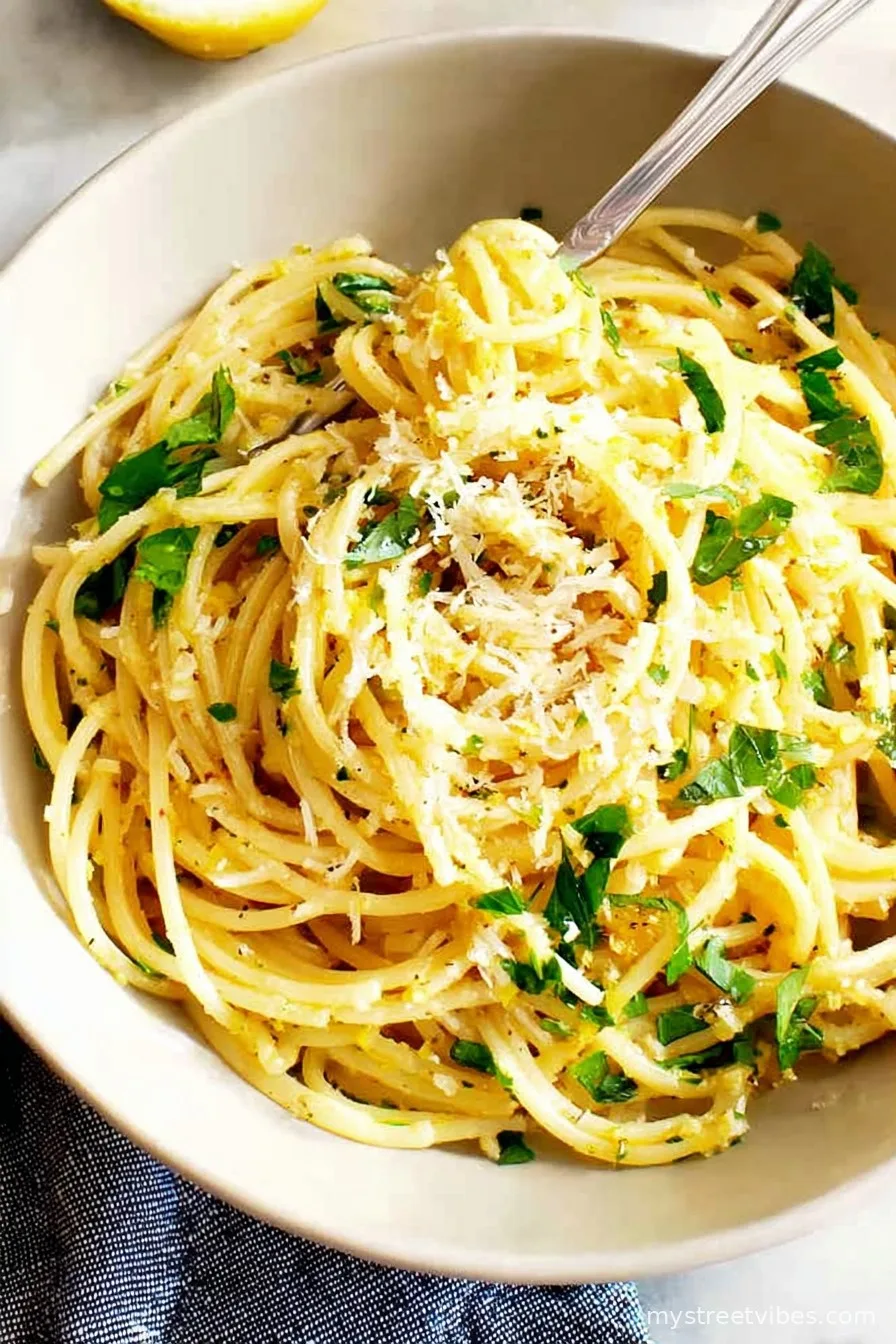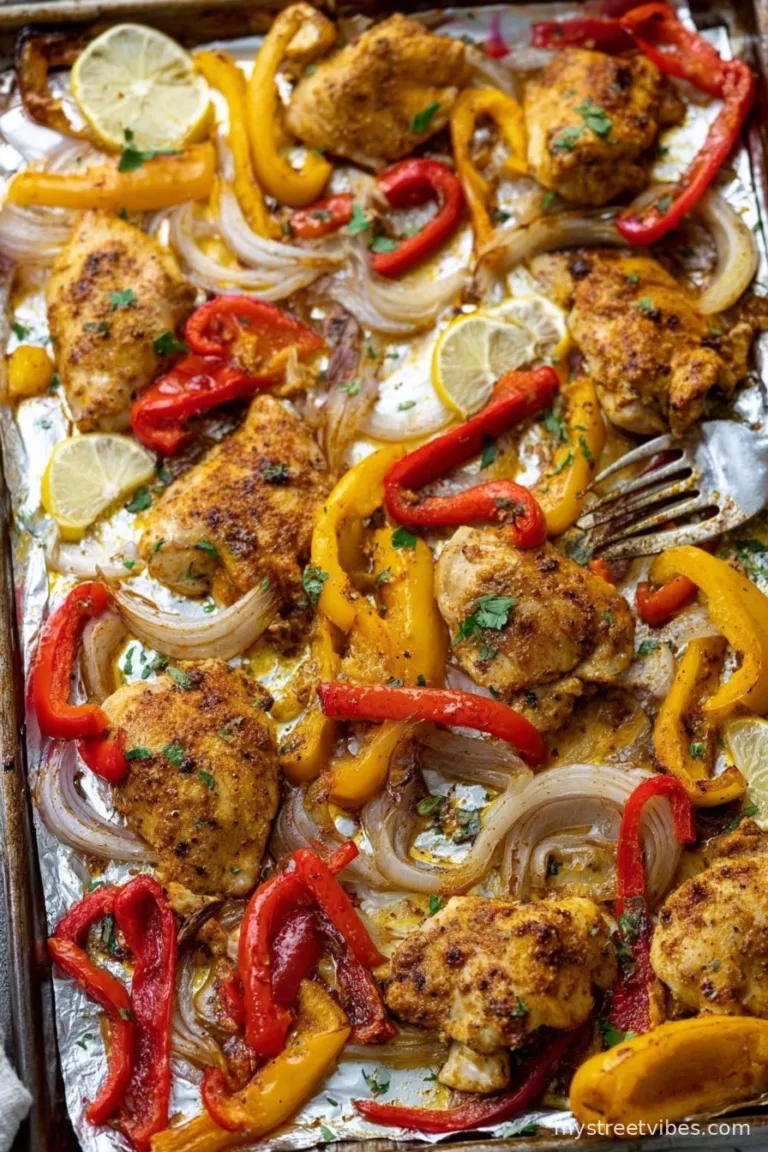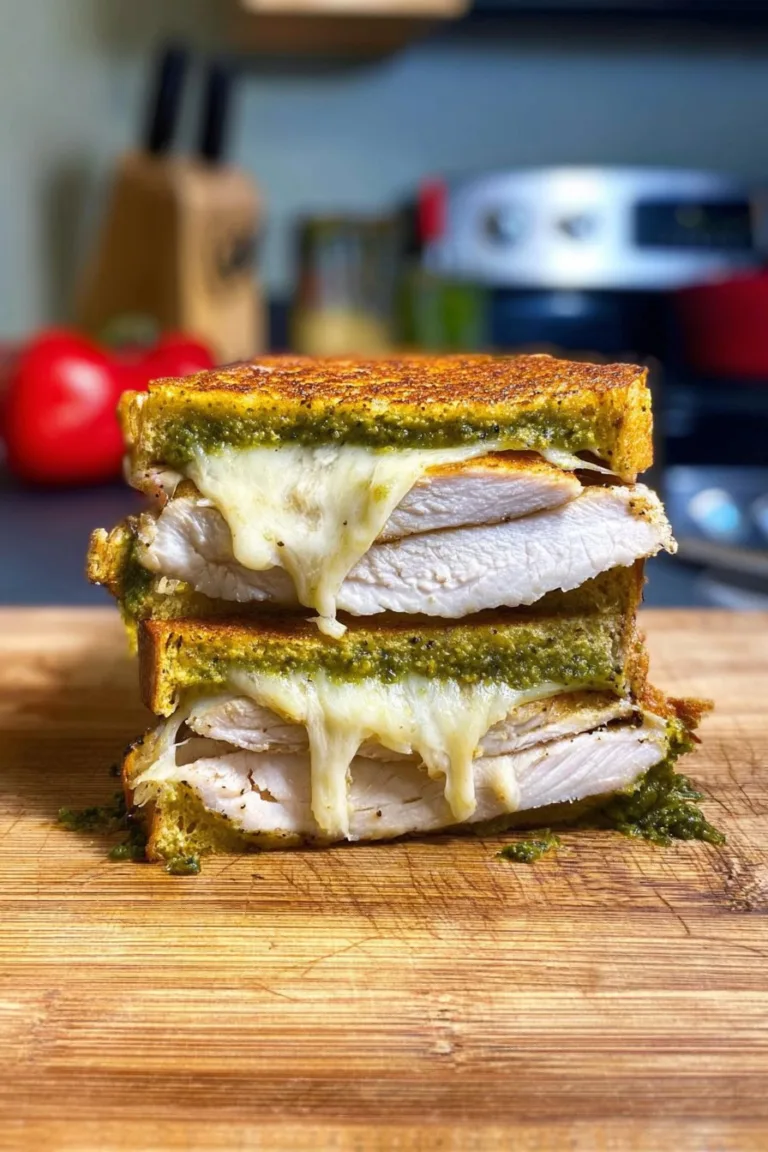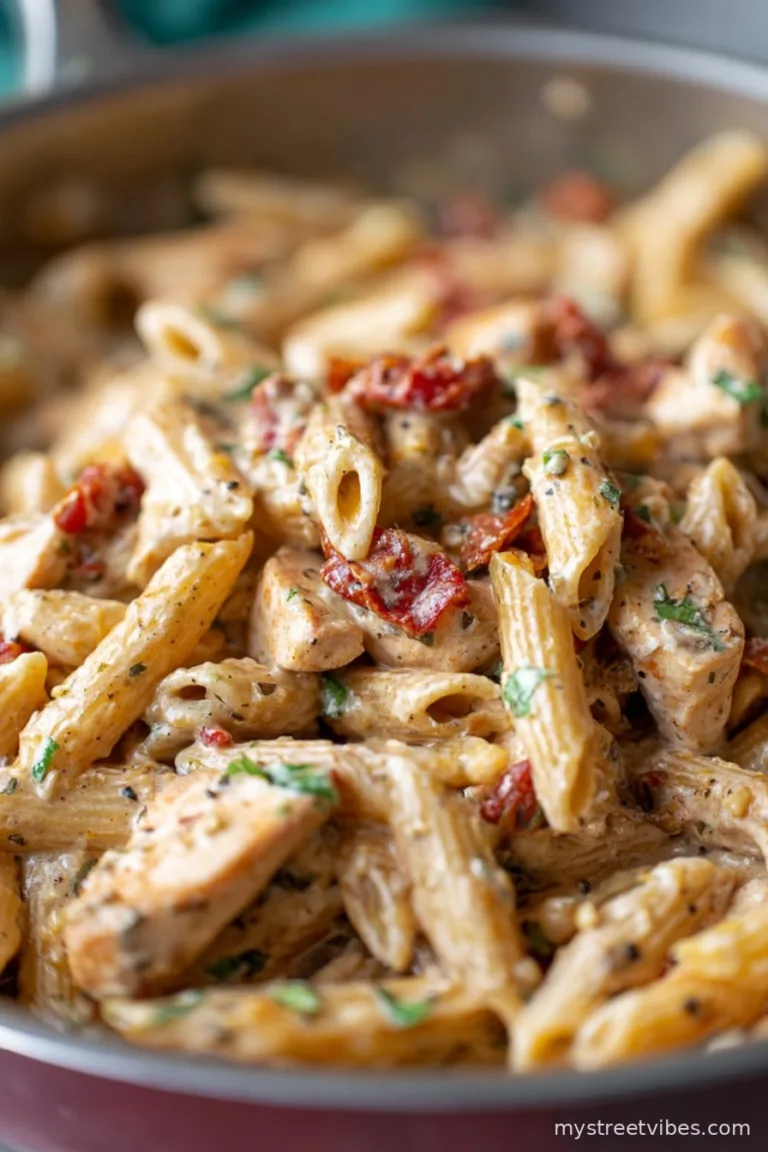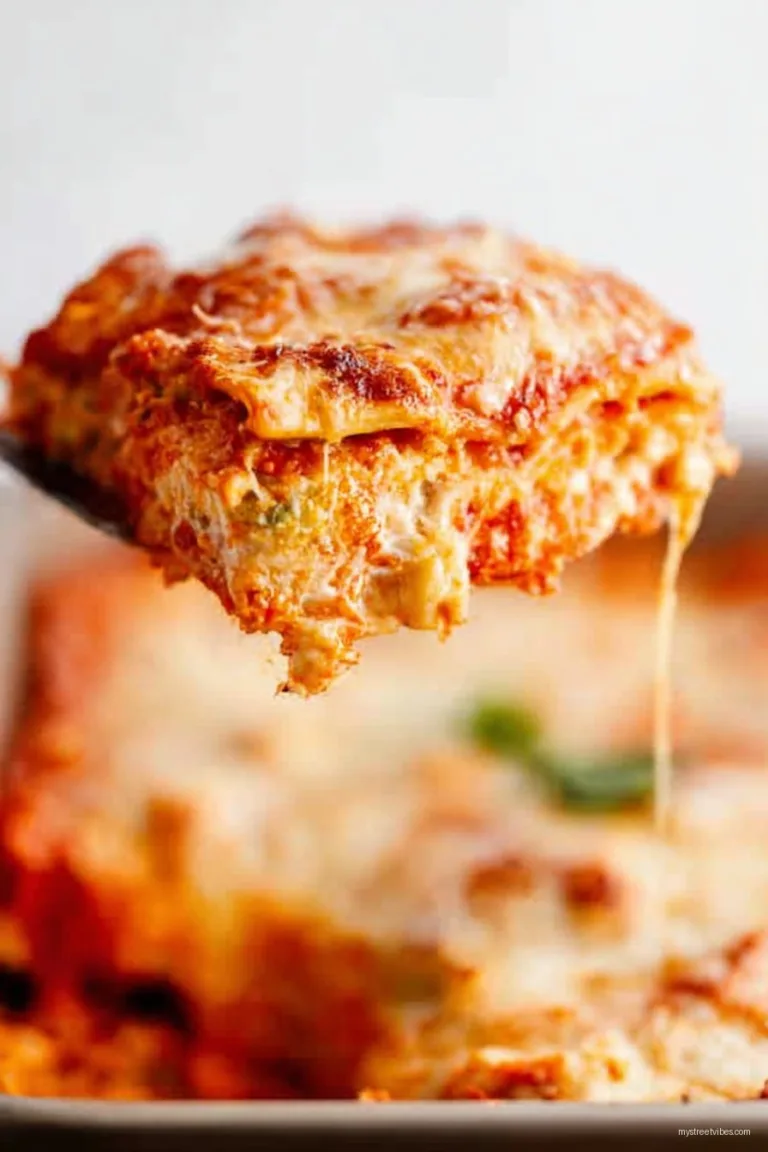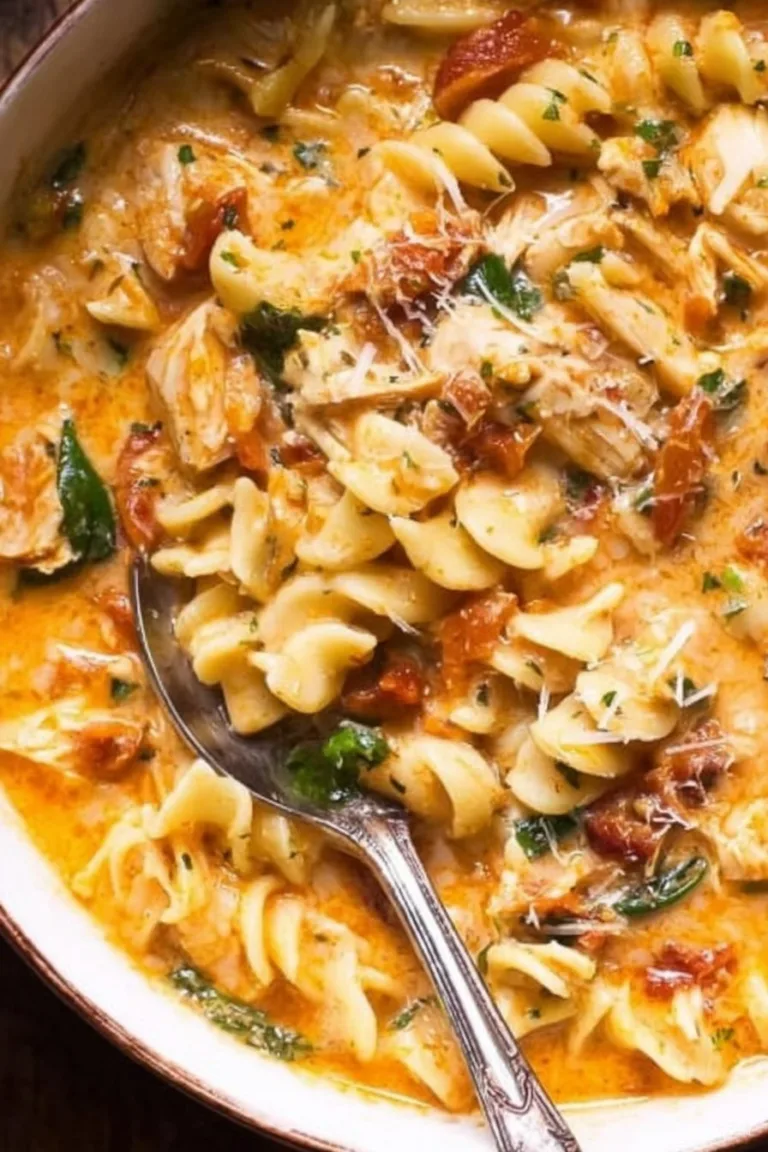Oh hey, friend! Grab a seat—I’m just about to start on my favorite lazy day dinner: Lemon Garlic Pasta. You know, if you’ve ever had one of those nights where your brain’s mashed potatoes and the fridge looks like a barren tundra, this recipe is a lifesaver (ask me how I know—actually, don’t!).
I first tried this at my cousin’s flat in Manchester—her kitchen is the size of a broom closet and her dog kept trying to eat the garlic, but somehow, dinner turned out epic. Ever since, it’s my go-to when I’m low on time but my tastebuds are high on expectations (so, most Tuesdays if we’re being honest).
Why You’ll Love This
- I whip this up when I’m craving pasta but can’t be bothered to make sauce that takes ages. No judgment! Or when my family returns from work/school ravenous and the only thing in the pantry are sad spaghetti strands and a rather resilient lemon.
- My family goes absolutely bonkers for this—maybe it’s the zing, or maybe it’s because they have zero patience for food that takes more than 20 minutes.
- I used to find garlic a bit intimidating (garlic press? Nah) but honestly, a quick chop and you’re golden. Plus, my teen swears she doesn’t even miss the heavy cream. Go figure.
- (Side note: This is basically the antidote to those bland pasta nights where you wind up regretting your choices… trust me, been there.)
Here’s What You’ll Need (Give or Take)
- 250g dried pasta (spaghetti, linguine, or whatever you’ve got lying around—sometimes I use penne if I’m out of the long stuff)
- 3–4 cloves of garlic, thinly sliced or minced (sometimes I get lazy and use jarred, but shh)
- 1 big lemon (zested and juiced)—or 2 small ones; my gran swore by unwaxed lemons, but really any fresh lemon does the trick
- 4 tbsp olive oil (extra virgin if you can, but I’ve made this with regular stuff and we still ate it)
- Big handful of fresh parsley, chopped (totally optional if you’re not feeling fancy)
- Grated parmesan or pecorino—good for finishing (or leave it out for vegan vibes)
- Salt & black pepper to taste (I always go a bit wild with the pepper, but that’s just me)
- Optional: crushed red pepper flakes, a knob of butter (if you’re feeling decadent), or a handful of baby spinach (just wilt it in at the end)
How I Make This (Roughly)
- Put a big pot of salted water on to boil. Don’t skimp on the salt—think of the ocean, not a dainty stream.
- Toss in your pasta and cook ’til just shy of done. I usually taste a piece and if it still feels a tad firm, you’re good; you’ll finish it off in the sauce.
- Meanwhile, heat olive oil in a roomy frying pan over medium. Add your garlic slices (careful here, burnt garlic is the stuff of kitchen nightmares) and stir gently for a minute or two. You’re aiming for just golden, not brown—actually, I find it works better if you go slow here.
- As soon as the garlic’s ready and the aroma hits you like a warm hug, add the lemon zest. Give it a little stir, and maybe inhale deeply, because it’s gonna smell amazing.
- Scoop out a cup of pasta water (don’t skip this, I once did and my sauce was sad and gluey) and drain the pasta.
- Chuck the pasta straight into the pan with the garlic and zest, pour over about half that pasta water, and add the lemon juice. Toss it all around. Don’t worry if it looks a bit soupy; it’ll sort itself out as you toss.
- Grind over plenty of black pepper, toss again, and now’s the time for add-ins—parsley, butter, cheese, chili flakes, whatever’s calling to you.
- This is where I usually sneak a taste (for quality control, you know) and adjust salt, maybe squeeze in a smidge more lemon if it needs extra zing.
- Serve up in bowls and sprinkle on more cheese if you’re feeling generous. (Or maybe less, if your kid’s lactose intolerant like mine.)
Lemon Garlic Pasta Notes from My Kitchen
- Sometimes the sauce gets a bit too thick if I let it sit, so just splash in more pasta water—honestly, no one’s judging.
- If your garlic goes a little too brown, you can swap in another clove quickly (or pretend you like it smoky—guilty!).
- This actually tastes even brighter the next day, but I can’t confirm because leftovers rarely survive breakfast at my place.
My Variations (Some Worked, Some… Not So Much)
- I’ve stirred in leftover roast chicken (not bad) or grilled zucchini (delicious—but nobody tell my kids).
- One time, tried it with lime instead of lemon. Wouldn’t recommend! Came out way too sharp—it’s still in the recipe graveyard.
- Capers are a good twist, if you like that briny thing. Olives are nice too, but my partner says they ‘ruin the vibe’—opinions vary.
No Fancy Equipment? No Worries
- If you don’t have a zester, just use the side of your box grater. Or (confession) a sharp knife and some patience works. I once made this with a potato peeler and still had all my fingers at the end, so…
- If your pan’s a bit small, just do the final toss in the pasta pot. Less to wash up anyway—silver linings.
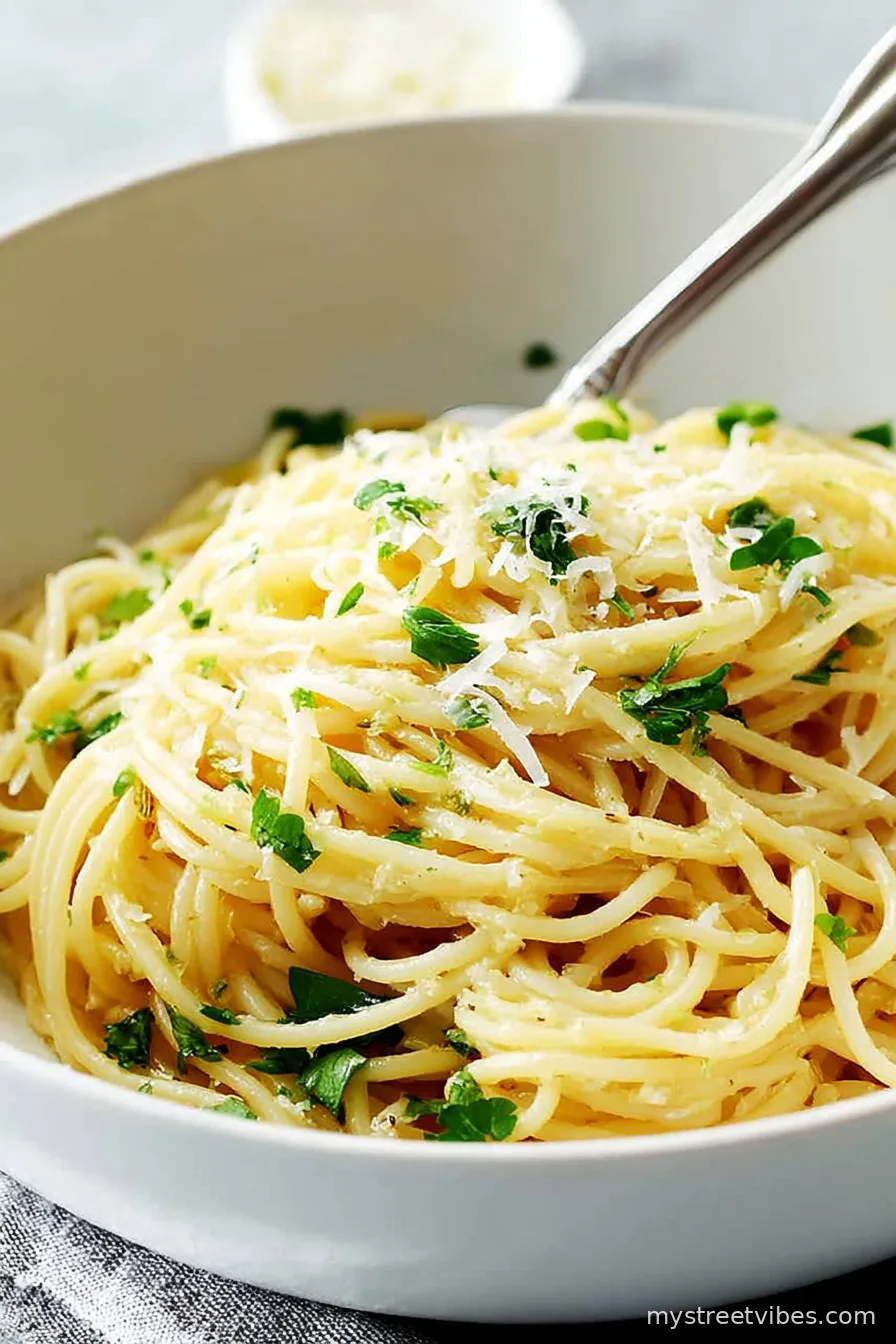
How to Store It (Theoretically)
- Pop leftovers (if any) in an airtight tub in the fridge, up to two days. Though honestly, in my house it never lasts more than a day. Cold straight from the fridge with a fork? Perfection.
How We Serve It (Our Little Traditions)
- I like it with a glass of cold white wine and maybe some crusty bread to mop up the last of the sauce.
- My little one insists on peas on the side (don’t ask me why), and sometimes we serve with a simple salad—here’s my standard green salad if you need ideas.
A Couple of Pro Tips (Learned the Hard Way)
- I tried rushing the garlic step once—ended up with bitter pasta. You really can’t fool the garlic gods here.
- Taste as you go! I used to just trust the recipe but sometimes one lemon is juicier than another. If in doubt, go easy then add more—otherwise, it’s pucker city.
FAQs — Because I Keep Getting Asked!
- Q: Can I make this gluten-free?
Sure thing—just grab any gluten-free pasta; I like the corn-based ones personally, they don’t turn mushy (most of the time). These tips help too. - Q: Do I need fresh lemons?
Well, technically bottled juice would work in a pinch, but the zest is what makes it pop. Without zest, it’s a bit… flat? I wouldn’t bother otherwise, but that’s just me. - Q: Can I add protein?
Yep! I often toss in cooked shrimp or, funny enough, leftover salmon (not traditional, but tasty). Or, for veg-heads, chickpeas are surprisingly good in this. - Q: Is this enough for a main?
If you’re feeding hungry adults, probably bump up the quantities, or add a side. This disappears fast around here.
Somehow this dish always feels like a tiny vacation from the everyday, with minimal faff and a lot of bright flavor. Oh, and if you end up adding too much lemon, just tell everyone it’s “extra zesty”—British understatement works wonders when dinner goes a bit sideways.
If you want another twist, check out this lemony pasta by Smitten Kitchen—Deb always has ideas I wish I’d thought of first. Anyway. Go forth and pasta!
Ingredients
- 12 oz spaghetti or linguine
- 3 tablespoons olive oil
- 4 garlic cloves, minced
- 1 large lemon, zested and juiced
- 1/2 teaspoon crushed red pepper flakes
- 1/2 cup grated Parmesan cheese
- 2 tablespoons fresh parsley, chopped
- Salt and black pepper, to taste
Instructions
-
1Bring a large pot of salted water to a boil. Add pasta and cook according to package instructions until al dente. Reserve 1/2 cup of pasta water, then drain.
-
2While pasta cooks, heat olive oil in a large skillet over medium heat. Add minced garlic and crushed red pepper flakes; sauté for 1-2 minutes until fragrant, being careful not to brown the garlic.
-
3Stir in lemon zest and lemon juice, then add the cooked pasta to the skillet. Toss to combine, adding reserved pasta water as needed to loosen the sauce.
-
4Remove from heat. Add grated Parmesan cheese, chopped parsley, salt, and black pepper. Toss well to coat the pasta.
-
5Divide the pasta among plates and garnish with extra Parmesan and parsley if desired. Serve immediately.
Approximate Information for One Serving
Nutrition Disclaimers
Number of total servings shown is approximate. Actual number of servings will depend on your preferred portion sizes.
Nutritional values shown are general guidelines and reflect information for 1 serving using the ingredients listed, not including any optional ingredients. Actual macros may vary slightly depending on specific brands and types of ingredients used.
To determine the weight of one serving, prepare the recipe as instructed. Weigh the finished recipe, then divide the weight of the finished recipe (not including the weight of the container the food is in) by the desired number of servings. Result will be the weight of one serving.
Did you make this recipe?
Please consider Pinning it!!

